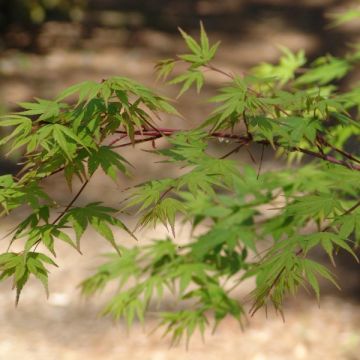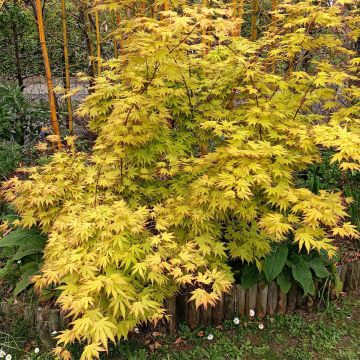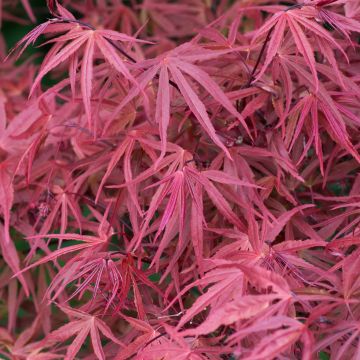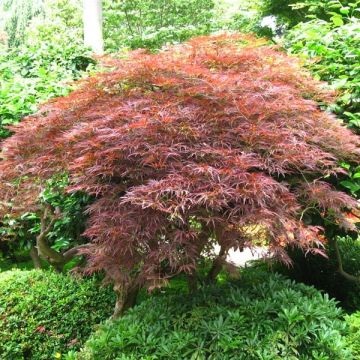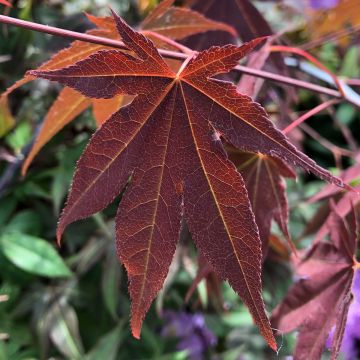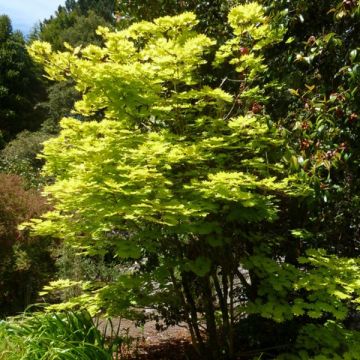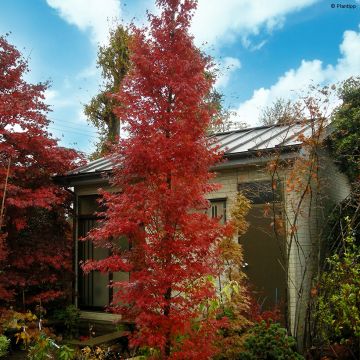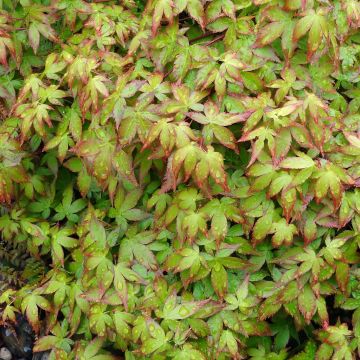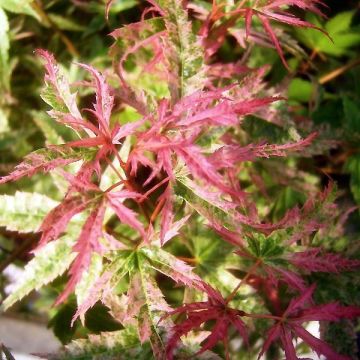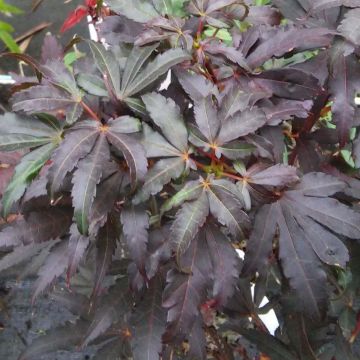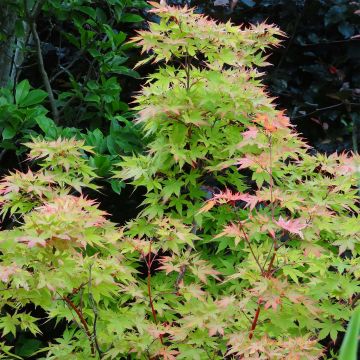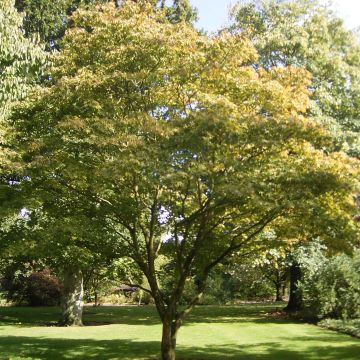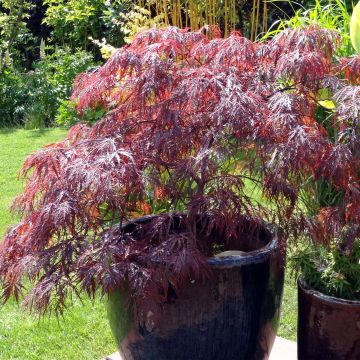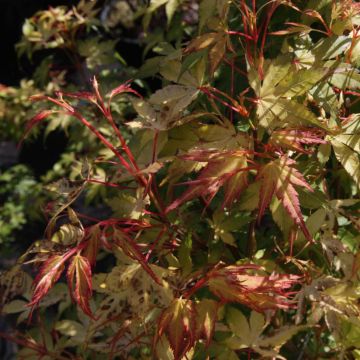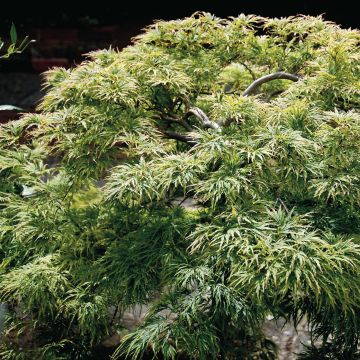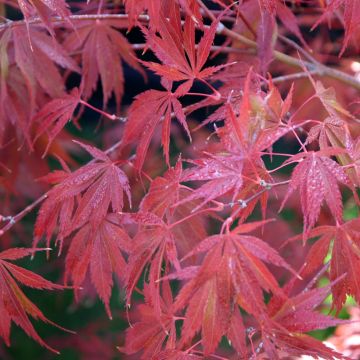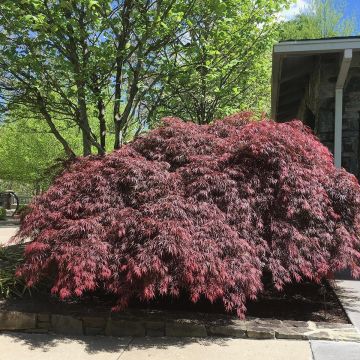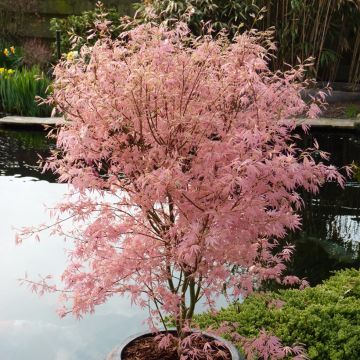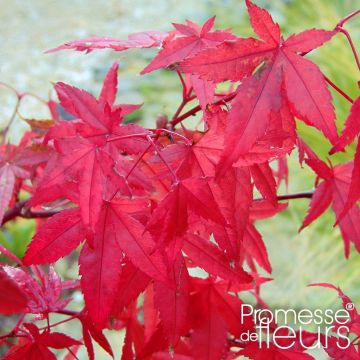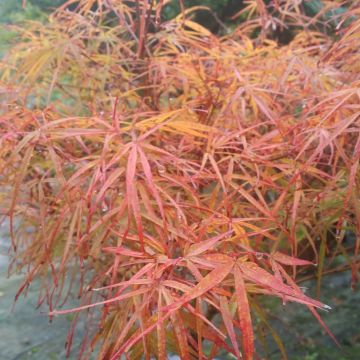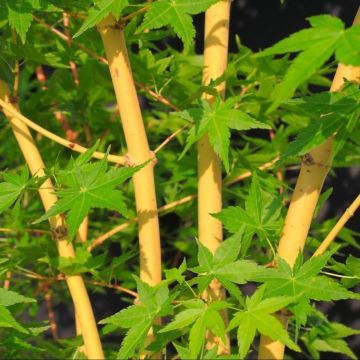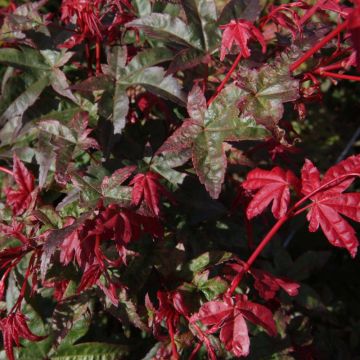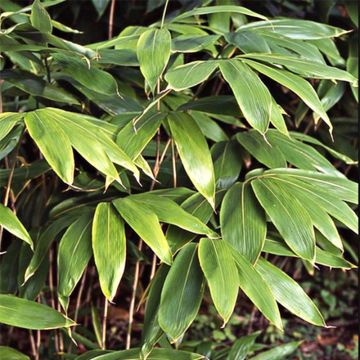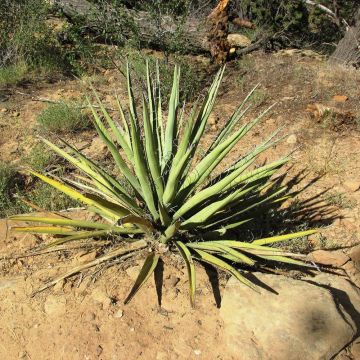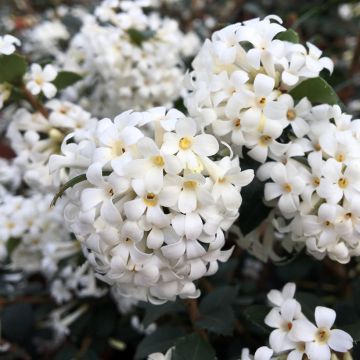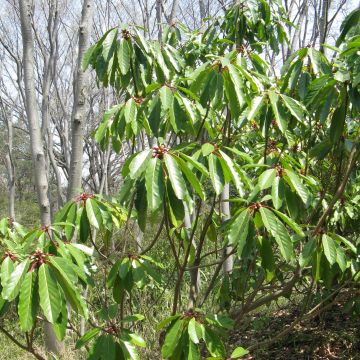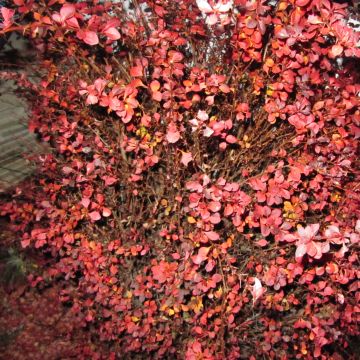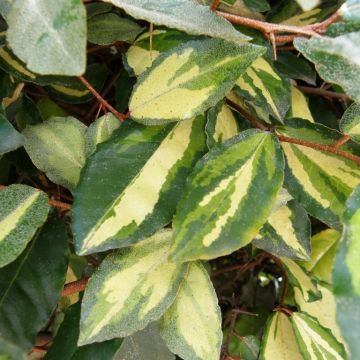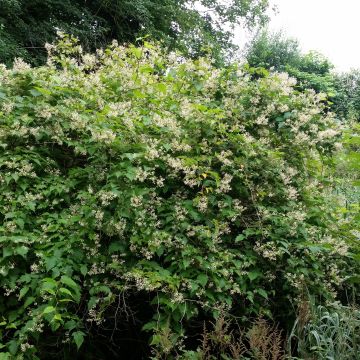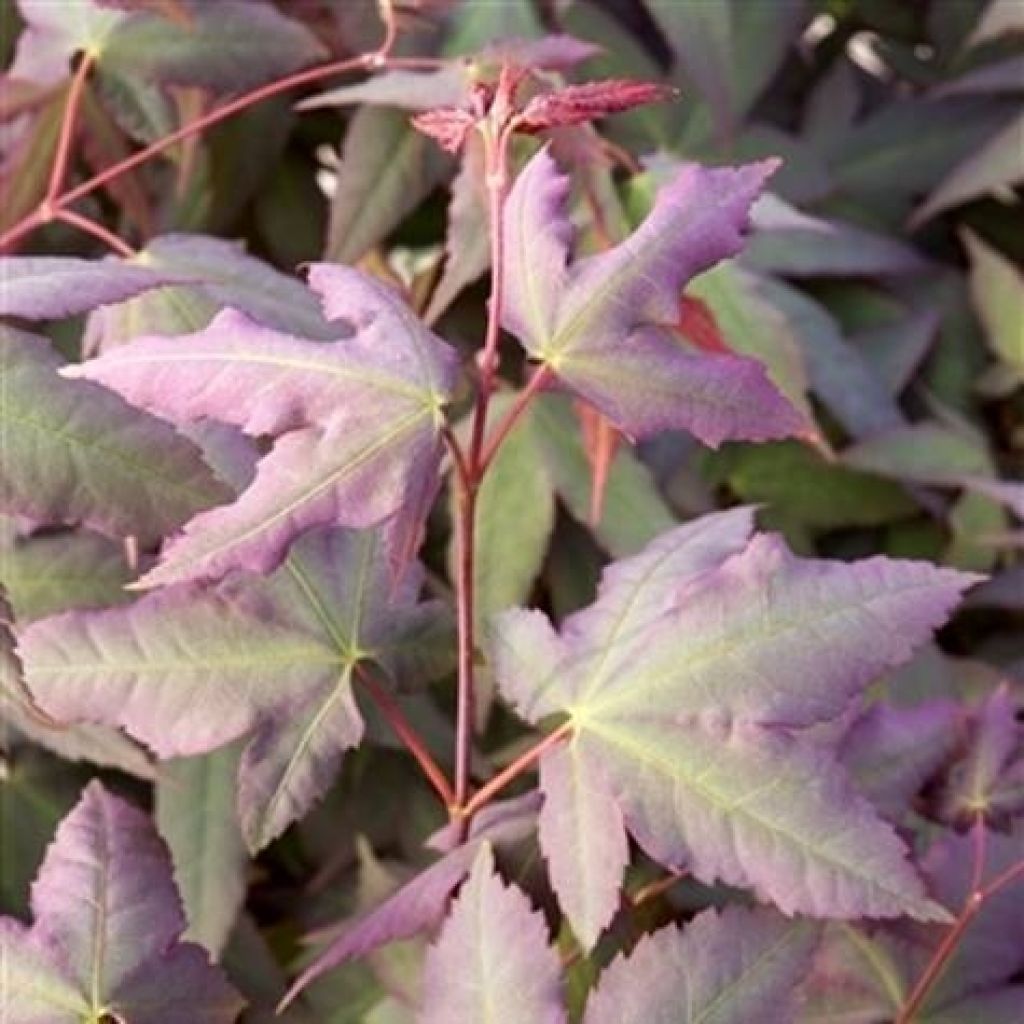

Acer palmatum Mystic Jewel - Japanese Maple
Acer palmatum Mystic Jewel - Japanese Maple
Acer palmatum Mystic Jewel
Japanese Maple, Palmate Maple
I have just planted it in a pot but I would like to know if I can put a flower plant at its base or not.
Mariele, 27/04/2019
Why not try an alternative variety in stock?
View all →This plant carries a 24 months recovery warranty
More information
We guarantee the quality of our plants for a full growing cycle, and will replace at our expense any plant that fails to recover under normal climatic and planting conditions.
From €5.90 for pickup delivery and €6.90 for home delivery
Express home delivery from €8.90.
Delivery to Corse prohibited: UE law prohibits the import of this plant from mainland France to Corse as part of the fight against Xylella fastidiosa. Please accept our sincere apologies.
More information
Does this plant fit my garden?
Set up your Plantfit profile →
Description
Acer palmatum 'Mystic Jewel' is a new variety of Japanese maple with unique colouration. Its lobed leaves transition from purple-violet to green washed with a strange and enticing blend of mauve-grey-silver before turning fiery red in autumn. It boasts an elegant silhouette supported by slightly trailing branches. This medium-sized variety will easily find its place in a small garden, in humus-rich and moist soil. Placed in a carefully chosen large pot, this charming and beautifully coloured shrub will become the focal point of a terrace, in partial shade.
Originally from eastern China, Korea, and Japan, Acer palmatum is the origin of a multitude of horticultural varieties that compete in beauty. Japanese maple belongs, like all maples, to the Sapindaceae family (formerly Aceraceae). It is relatively hardy but cannot tolerate dry and cold winds and excess limestone in the soil.
The 'Mystic Jewel' cultivar (SKACER19MYJUB) was recently selected in the Netherlands. It grows rather slowly and over time develops a bushy and upright habit with a rounded crown. At maturity, it will reach an average height of 1.4m (5ft) and a spread of 1m (3ft) in the ground, slightly less if grown in a pot. This small tree has palm-shaped leaves, divided into 3 to 5 dentate lobes, carried by purple-mauve petioles. Its spring foliage is tinted dark purple, and will turn almond green with a smoky grey-purple hue in summer, before taking on brilliant autumnal colours. This foliage is deciduous and falls in autumn. The discreet flowering, often hidden by the foliage, occurs in May-June. The flowers, grouped in small clusters, sometimes produce fruits with curved wings called samaras, measuring 3cm (1in) long.
Acer palmatum 'Mystic Jewel' thrives in preferably non-limestone, moist, fertile, loose, and well-drained soil, in partial shade or morning sun, but must be sheltered from cold and dry winds. Compact yet sculptural and colourful, it is well suited to small Japanese, exotic, or contemporary gardens, as well as for ornamenting terraces and patios, and shaded rock gardens. Azaleas, heathers, dwarf rhododendrons, field camellias, and heathers will be its most beautiful companions. It can be shaped into a magnificent bonsai in the 'Chokkan' style (upright trunk), 'Yose-Ue' style (forest bonsai), or 'Bonkei' style (landscape on a plateau). Mix several varieties of Japanese maple to vary the colours and foliage structures, and plant evergreen ground cover plants at their base; the effect is always stunning at the end of the season.
Report an error about the product description
Plant habit
Flowering
Foliage
Botanical data
Acer
palmatum
Mystic Jewel
Aceraceae
Japanese Maple, Palmate Maple
Cultivar or hybrid
Other Japanese Maples
Planting and care
Plant in spring or autumn in preferably light, acidic, moist, deep, loose, and well-drained soil, in a semi-shaded position, even shade, and sheltered from cold and dry winds. The soil should be kept moist by mulching in summer, if necessary, but should not be waterlogged in winter. Add a significant amount of organic matter every 3 years to ensure a good humus content in the soil. Mulch, water, and mist the foliage on hot evenings. Winter pruning is limited to balancing the branches. Treat preventively against scale insects and Verticillium, a fungal disease that thrives in heavy and overly moist soil.
Planting period
Intended location
Care
-
, onOrder confirmed
Reply from on Promesse de fleurs
Striking foliage shrubs
Haven't found what you were looking for?
Hardiness is the lowest winter temperature a plant can endure without suffering serious damage or even dying. However, hardiness is affected by location (a sheltered area, such as a patio), protection (winter cover) and soil type (hardiness is improved by well-drained soil).

Photo Sharing Terms & Conditions
In order to encourage gardeners to interact and share their experiences, Promesse de fleurs offers various media enabling content to be uploaded onto its Site - in particular via the ‘Photo sharing’ module.
The User agrees to refrain from:
- Posting any content that is illegal, prejudicial, insulting, racist, inciteful to hatred, revisionist, contrary to public decency, that infringes on privacy or on the privacy rights of third parties, in particular the publicity rights of persons and goods, intellectual property rights, or the right to privacy.
- Submitting content on behalf of a third party;
- Impersonate the identity of a third party and/or publish any personal information about a third party;
In general, the User undertakes to refrain from any unethical behaviour.
All Content (in particular text, comments, files, images, photos, videos, creative works, etc.), which may be subject to property or intellectual property rights, image or other private rights, shall remain the property of the User, subject to the limited rights granted by the terms of the licence granted by Promesse de fleurs as stated below. Users are at liberty to publish or not to publish such Content on the Site, notably via the ‘Photo Sharing’ facility, and accept that this Content shall be made public and freely accessible, notably on the Internet.
Users further acknowledge, undertake to have ,and guarantee that they hold all necessary rights and permissions to publish such material on the Site, in particular with regard to the legislation in force pertaining to any privacy, property, intellectual property, image, or contractual rights, or rights of any other nature. By publishing such Content on the Site, Users acknowledge accepting full liability as publishers of the Content within the meaning of the law, and grant Promesse de fleurs, free of charge, an inclusive, worldwide licence for the said Content for the entire duration of its publication, including all reproduction, representation, up/downloading, displaying, performing, transmission, and storage rights.
Users also grant permission for their name to be linked to the Content and accept that this link may not always be made available.
By engaging in posting material, Users consent to their Content becoming automatically accessible on the Internet, in particular on other sites and/or blogs and/or web pages of the Promesse de fleurs site, including in particular social pages and the Promesse de fleurs catalogue.
Users may secure the removal of entrusted content free of charge by issuing a simple request via our contact form.
The flowering period indicated on our website applies to countries and regions located in USDA zone 8 (France, the United Kingdom, Ireland, the Netherlands, etc.)
It will vary according to where you live:
- In zones 9 to 10 (Italy, Spain, Greece, etc.), flowering will occur about 2 to 4 weeks earlier.
- In zones 6 to 7 (Germany, Poland, Slovenia, and lower mountainous regions), flowering will be delayed by 2 to 3 weeks.
- In zone 5 (Central Europe, Scandinavia), blooming will be delayed by 3 to 5 weeks.
In temperate climates, pruning of spring-flowering shrubs (forsythia, spireas, etc.) should be done just after flowering.
Pruning of summer-flowering shrubs (Indian Lilac, Perovskia, etc.) can be done in winter or spring.
In cold regions as well as with frost-sensitive plants, avoid pruning too early when severe frosts may still occur.
The planting period indicated on our website applies to countries and regions located in USDA zone 8 (France, United Kingdom, Ireland, Netherlands).
It will vary according to where you live:
- In Mediterranean zones (Marseille, Madrid, Milan, etc.), autumn and winter are the best planting periods.
- In continental zones (Strasbourg, Munich, Vienna, etc.), delay planting by 2 to 3 weeks in spring and bring it forward by 2 to 4 weeks in autumn.
- In mountainous regions (the Alps, Pyrenees, Carpathians, etc.), it is best to plant in late spring (May-June) or late summer (August-September).
The harvesting period indicated on our website applies to countries and regions in USDA zone 8 (France, England, Ireland, the Netherlands).
In colder areas (Scandinavia, Poland, Austria...) fruit and vegetable harvests are likely to be delayed by 3-4 weeks.
In warmer areas (Italy, Spain, Greece, etc.), harvesting will probably take place earlier, depending on weather conditions.
The sowing periods indicated on our website apply to countries and regions within USDA Zone 8 (France, UK, Ireland, Netherlands).
In colder areas (Scandinavia, Poland, Austria...), delay any outdoor sowing by 3-4 weeks, or sow under glass.
In warmer climes (Italy, Spain, Greece, etc.), bring outdoor sowing forward by a few weeks.

































